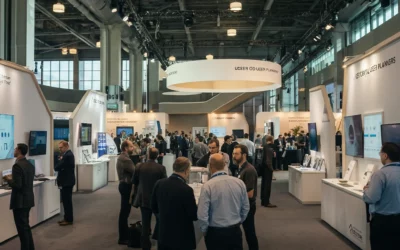Cash bonuses disappear quickly—spent on bills, forgotten within weeks. But incentive travel? That creates stories your top performers will tell for years. Smart event planners know that experiences trump paychecks when it comes to driving real business results, and the data backs it up in ways that’ll make your CFO smile.
If you’re still debating whether incentive travel is worth the investment, consider this: companies using travel rewards see 3× higher revenue increases than those sticking with cash bonuses. When you’re tasked with proving ROI on every program dollar, those numbers matter. Let’s break down why incentive travel consistently outperforms traditional rewards—and how you can make it work for your organization.
The Power of Experience Over Cash
Money gets absorbed into everyday life faster than you can say “direct deposit.” A $5,000 bonus might cover mortgage payments or car repairs, but it rarely creates the emotional connection that drives long-term loyalty. Travel rewards, on the other hand, deliver something far more valuable: lasting memories and social currency.
When your top salespeople post photos from that Cabo retreat or share stories about the zipline adventure in Costa Rica, they’re not just celebrating—they’re becoming brand ambassadors. That trophy trip becomes proof of their success, shared on social media and at dinner parties. Unlike a forgotten bonus, these experiences create positive associations with your company that extend far beyond the trip itself.
The psychological impact runs deeper too. Having a luxury getaway to work toward changes behavior in ways cash simply can’t. Employees give extra effort when they know that island retreat is within reach, creating a positive motivation cycle that starts months before departure and continues long after they return.
Team Building and Camaraderie That Actually Works
Let’s be honest: most team-building activities feel forced. Trust falls in the conference room? Please. But put your top performers on a sunset catamaran cruise or organize a cooking class in Tuscany, and watch real relationships form.
Group travel naturally builds camaraderie in ways no office retreat can match. When colleagues share an adventure—whether it’s exploring ancient ruins or simply relaxing together at a beachside dinner—workplace bonds strengthen organically. According to incentive program planners, 72% rank relationship-building as the top success factor of these trips.
Think about it: your sales director and account manager might exchange pleasantries in the hallway, but after navigating the streets of Barcelona together or conquering that mountain hike in Colorado, they return as genuine allies. These strengthened relationships translate directly into better collaboration, smoother project execution, and a more cohesive team culture.
Boosting Motivation and Loyalty Where It Counts
Here’s where the numbers get really interesting. Studies show that 96% of incentive trip earners report feeling highly motivated by the award, and 73% say the experience increases their loyalty to the company. Compare that to the fleeting satisfaction of a cash bonus, and the choice becomes clear.
The emotional connection formed during incentive trips creates what behavioral economists call “peak experiences”—moments so positive they influence long-term decision-making. Your top performer isn’t just remembering a nice vacation; they’re remembering that your company made it possible. That emotional bond translates into stronger retention and continued high performance.
When employees know their hard work could land them on a tropical beach or an Alpine ski adventure, it changes how they approach their daily tasks. The goal becomes tangible, exciting, and worth the extra effort. This isn’t just feel-good theory—it’s measurable motivation that drives real results.
Impact on Revenue and Performance
The business case for incentive travel gets stronger when you look at revenue impact. Companies that tie rewards to performance and use travel incentives see substantial gains: properly designed programs can boost sales productivity by approximately 18%, with reported ROI around 112%.
When your team knows that luxury getaway is on the line, performance jumps. One industry report found that businesses using non-cash rewards like travel achieved three times higher revenue increases than those relying solely on cash bonuses. That’s not just correlation—it’s causation driven by the unique motivational power of experiential rewards.
The ripple effects extend beyond just the trip winners too. When other employees see their colleagues being rewarded with enviable travel experiences, it creates aspirational motivation throughout the organization. Suddenly, everyone’s working a little harder to earn their spot on next year’s incentive trip.
Retention and Reduced Turnover
Replacing a top salesperson can cost tens of thousands in recruiting, training, and lost productivity. Organizations with strong reward programs, including travel incentives, see turnover drop by roughly 26% and retention rise by about 14%. When you’re dealing with tight talent markets and high replacement costs, those numbers represent serious savings.
Incentive travel creates golden handcuffs that cash bonuses simply can’t match. Your top performers aren’t just staying for the paycheck—they’re staying for the experiences, the recognition, and the knowledge that their hard work leads to something truly rewarding. It’s much harder to leave a company that flies you to St. Lucia than one that just cuts bigger checks.
The retention benefit compounds over time too. Employees who’ve experienced your incentive travel program become advocates, helping with recruitment and creating a positive cycle that attracts other high performers who want access to similar rewards.
ROI of Incentive Travel
Let’s talk numbers that matter to your budget approval process. Survey data suggests that every $1 invested in travel incentives yields approximately $12.50 in revenue—reflecting the combined lift from higher sales, renewed loyalty, and increased client satisfaction.
This ROI comes from multiple sources: the performance boost while employees work toward the trip, the loyalty and motivation gained during the experience, and the continued high performance afterward. Unlike one-time cash bonuses that provide temporary satisfaction, travel rewards create ongoing value that extends well beyond the trip duration.
Even conservative estimates show impressive returns. When you factor in reduced turnover costs, increased productivity, and the cultural benefits of having highly motivated top performers, the math becomes compelling. Smart event planners track these metrics carefully, providing executives with data that proves incentive travel isn’t just a nice perk—it’s strategic investment.
Rewarding Top Performers Effectively
Here’s something interesting: in large surveys, 88.5% of employees who earned incentive trips were already top performers. This shows that incentive programs effectively target high achievers while encouraging others to raise their game.
This isn’t about participation trophies or feel-good gestures. Incentive travel rewards the people who are already driving your business forward, while creating aspirational goals for everyone else. It reinforces success publicly and memorably, sending clear messages about what your organization values.
The prestige factor matters too. Earning a spot on the President’s Club cruise or the Alpine adventure isn’t just a nice trip—it’s tangible proof of success that carries social currency both inside and outside your organization. That recognition amplifies motivation company-wide and helps establish clear performance benchmarks.
Creating Lasting Business Impact
Incentive travel programs deliver measurable results across multiple business metrics: increased productivity, enhanced loyalty, reduced turnover, and strengthened team dynamics. When planned strategically, these programs pay for themselves through improved performance while creating positive cultural changes that extend far beyond the trip itself.
The key is treating incentive travel as a strategic tool rather than just a nice perk. With proper planning, clear performance criteria, and destinations that truly excite your team, you’ll see returns that make even the most budget-conscious executives take notice.
Ready to build an incentive travel program that delivers real ROI? The planning process typically takes 6–12 months, so start early to secure the best venues and create those personalized touches that make all the difference. Your top performers—and your bottom line—will thank you for it.
You might also like…
Corporate Event Registration Solutions: Onsite Tools, Support, and Strategies Every Planner Needs
Corporate event planners face increased pressure to deliver flawless attendee experiences. Whether...
How to Plan a Successful User Conference: A Full Guide to Conference Planning and Management
1) Start with hypotheses — treat the event like an experiment Stop thinking “attendance” as your...
Revitalizing Sales Kickoff Events: Strategic Insights for 2026
Sales kickoff events (SKOs) are no longer just pep rallies – they’re mission-critical strategy...




